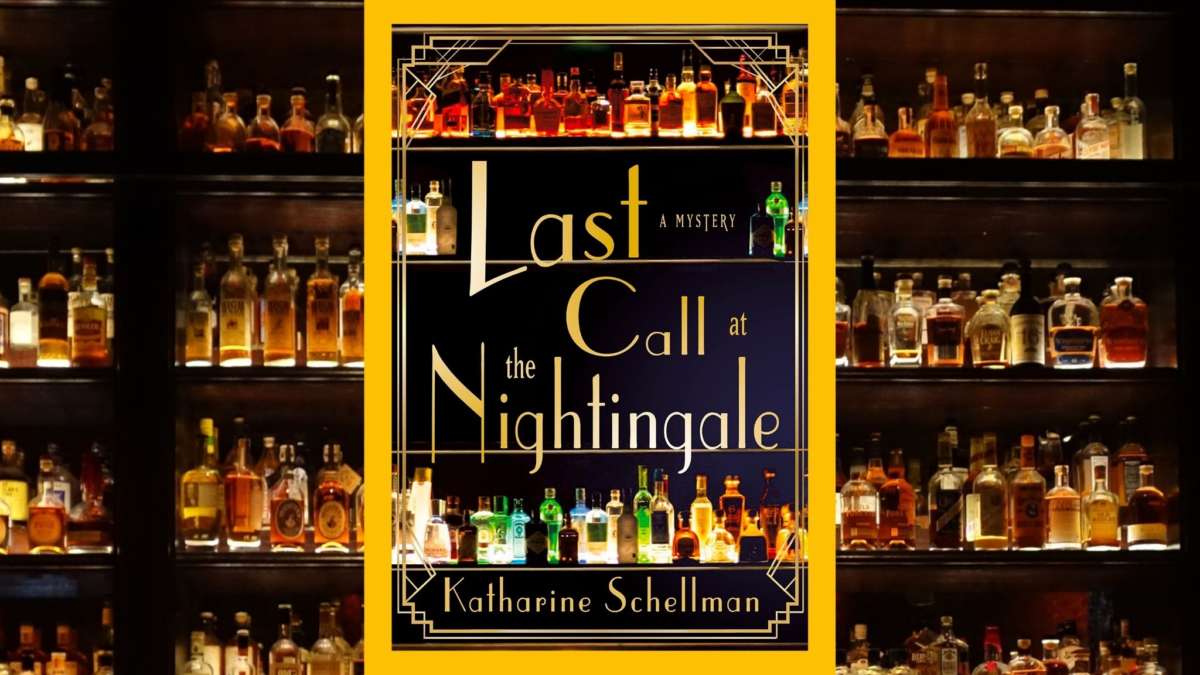Last Call at the Nightingale by Katharine Schellman
What's It About?
Jazz, flappers, bootleg whiskey, the Charleston — these are iconic images of the Roaring Twenties. Even though the Twenties started more than a century ago, somehow we Americans can imagine the wild decade as if we had foxtrotted through it ourselves.“A compelling, atmospheric series debut. Schellman expertly creates a strong sense of pace, introducing a nightclub as a world where people of different races, classes, and sexual orientations can come together.” —Library Journal
“Excellent … Vivian proves to be a most imaginative sleuth. Readers will eagerly await her return.” ―Publishers Weekly
—∞—
Jazz, flappers, bootleg whiskey, the Charleston — these are iconic images of the Roaring Twenties. Even though the Twenties started more than a century ago, somehow we Americans can imagine the wild decade as if we had foxtrotted through it ourselves.
The Twenties had a dark underbelly, too: shoot-outs and car chases, kidnapping and gangland killings — crime precipitated largely by Prohibition. Not to mention the criminality embedded in the pervasive hatred of Black Americans and immigrants. During these years, while the Ku Klux Klan entered its heyday, Jim Crow prevailed, and labor was brutally suppressed, Congress passed the 1924 Johnson-Reed Act, which imposed severe quotas on European immigrants and shut the door entirely on Asians.
A DIVERSE ENSEMBLE
That year, 1924, is the backdrop of Katharine Schellman’s new novel, Last Call at the Nightingale (Minotaur Books). It is the first installment of a “Jazz Age mystery series,” which one hopes will continue to feature the diverse cast of characters who populate a speakeasy, the Nightingale, owned by a mysterious gay white woman with the inimitable name of Honor Huxley.
Vivian Kelly, an Irish working girl, endures a sweatshop by day and cuts loose at night dancing and drinking. Her friend Bea Henry, a Black waitress, caters to a packed crowd while hoping to launch a singing career. Bartender Danny Chin, who also helps his parents with their Chinese restaurant, flaunts elegance and hides his street smarts. Danny’s childhood friend, Leo Green, has suddenly come to town from Chicago. He has a crush on Vivian but seems too shady for comfort.
WEALTH CONCEALS ANY CRIME
And then there is a corpse that Vivian and Bea, taking a cigarette break, find lying in the alley behind the Nightingale. The discovery sets off a chain of events that will put Vivian, in particular, in grave danger as she navigates the now unfriendly city. With the exception of Bea and her own disapproving sister, Florence, Vivian feels surrounded by people who are not quite what they seem. Terrified, she is nonetheless determined to identify the corpse and the killer. Subsequently, she is commanded to do so for mysterious reasons. What Vivian really wants, though, is a safe, happy life for herself and Florence, both orphaned at an early age.
On the prowl in Manhattan, Vivian quickly learns that the murder mystery involves all kinds of disreputable people, including those who live on upper Fifth Avenue and appear regularly in the society columns of the newspapers. From her tenement apartment in Hell’s Kitchen, south and west of Central Park, she travels downtown to the shop where she and Florence sew clothing for wealthy clients. She ventures farther south to Chinatown, and then north to the Upper East Side where she delivers the exquisite handmade dresses. She hops onto streetcars and steps into taxis when she can afford them or someone else is paying, all the while followed by various goons and a couple of good guys.
A HISTORICAL TIME CAPSULE
One of the pleasures of Last Call at the Nightingale is how the city thrusts the characters together, across the socioeconomic spectrum and racial and ethnic divides — even in 1924 when urban life was far more segregated. Each time that Vivian adds another piece to the puzzle, it is because she has found herself at a point of intersection with a man or woman who eyes her as suspiciously as she does them. Another delight is the important role of newspapers. Again and again, newspaper stories provide clues to Vivian and others who are trying to crack the mystery.
The Nightingale is a world unto itself, as Katharine Schellman shows us, from the bouncer who guards the door to the club’s shrewd, cagey owner. The author also persuaded this reader that the Nightingale is a kind of “home” — a place where men and women feel free to express their identities, mingle with whom they like and relax for a while.
Except when it’s raided!





